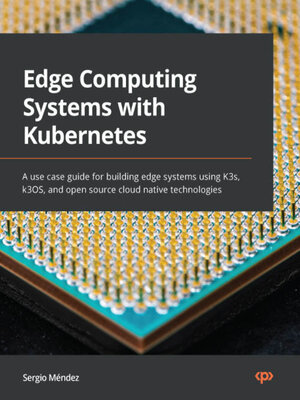
Edge Computing Systems with Kubernetes
ebook ∣ A use case guide for building edge systems using K3s, k3OS, and open source cloud native technologies
By Sergio Mendez

Sign up to save your library
With an OverDrive account, you can save your favorite libraries for at-a-glance information about availability. Find out more about OverDrive accounts.
Find this title in Libby, the library reading app by OverDrive.



Search for a digital library with this title
Title found at these libraries:
| Loading... |
Understand how to use K3s and k3OS for different use cases and discover best practices for building an edge computing system
Key FeaturesEdge computing is a way of processing information near the source of data instead of processing it on data centers in the cloud. In this way, edge computing can reduce latency when data is processed, improving the user experience on real-time data visualization for your applications. Using K3s, a light-weight Kubernetes and k3OS, a K3s-based Linux distribution along with other open source cloud native technologies, you can build reliable edge computing systems without spending a lot of money.
In this book, you will learn how to design edge computing systems with containers and edge devices using sensors, GPS modules, WiFi, LoRa communication and so on. You will also get to grips with different use cases and examples covered in this book, how to solve common use cases for edge computing such as updating your applications using GitOps, reading data from sensors and storing it on SQL and NoSQL databases. Later chapters will show you how to connect hardware to your edge clusters, predict using machine learning, and analyze images with computer vision. All the examples and use cases in this book are designed to run on devices using 64-bit ARM processors, using Raspberry Pi devices as an example.
By the end of this book, you will be able to use the content of these chapters as small pieces to create your own edge computing system.
What you will learnThis book is for engineers (developers and/or operators) seeking to bring the cloud native benefits of GitOps and Kubernetes to the edge. Anyone with basic knowledge of Linux and containers looking to learn Kubernetes using examples applied to edge computing and hardware systems will benefit from this book.






